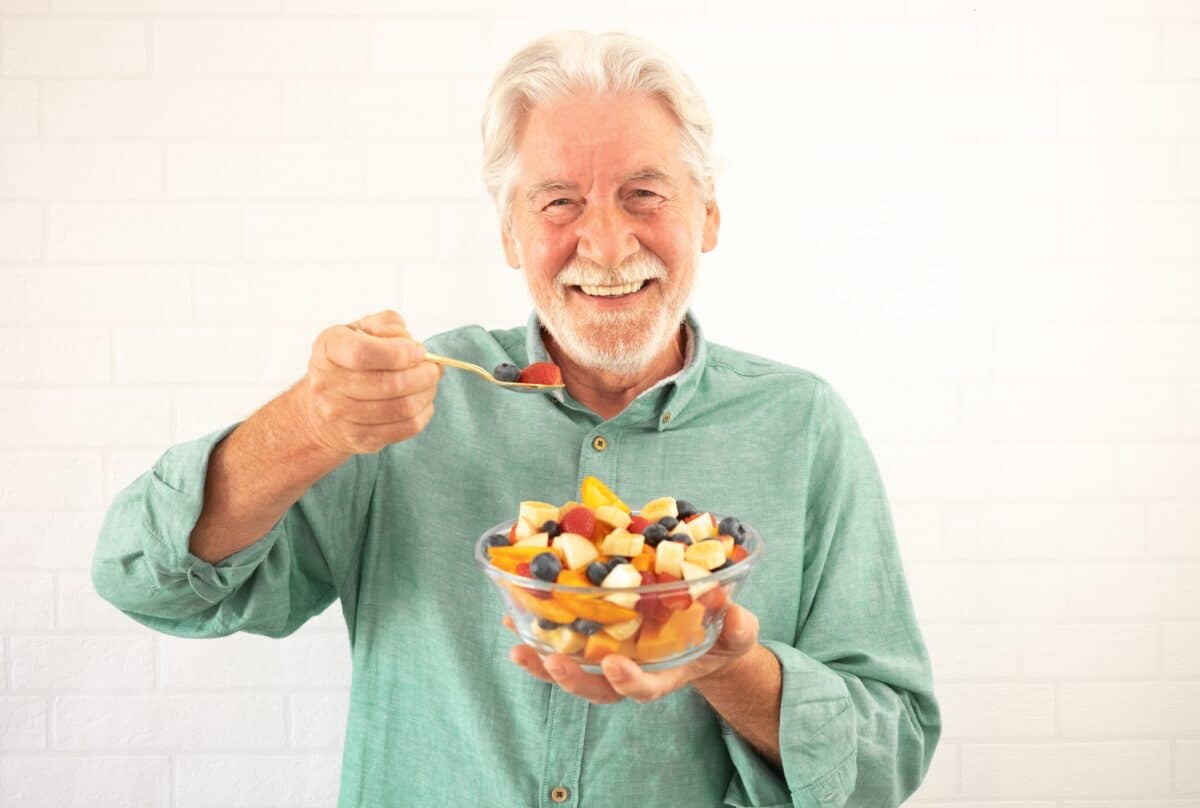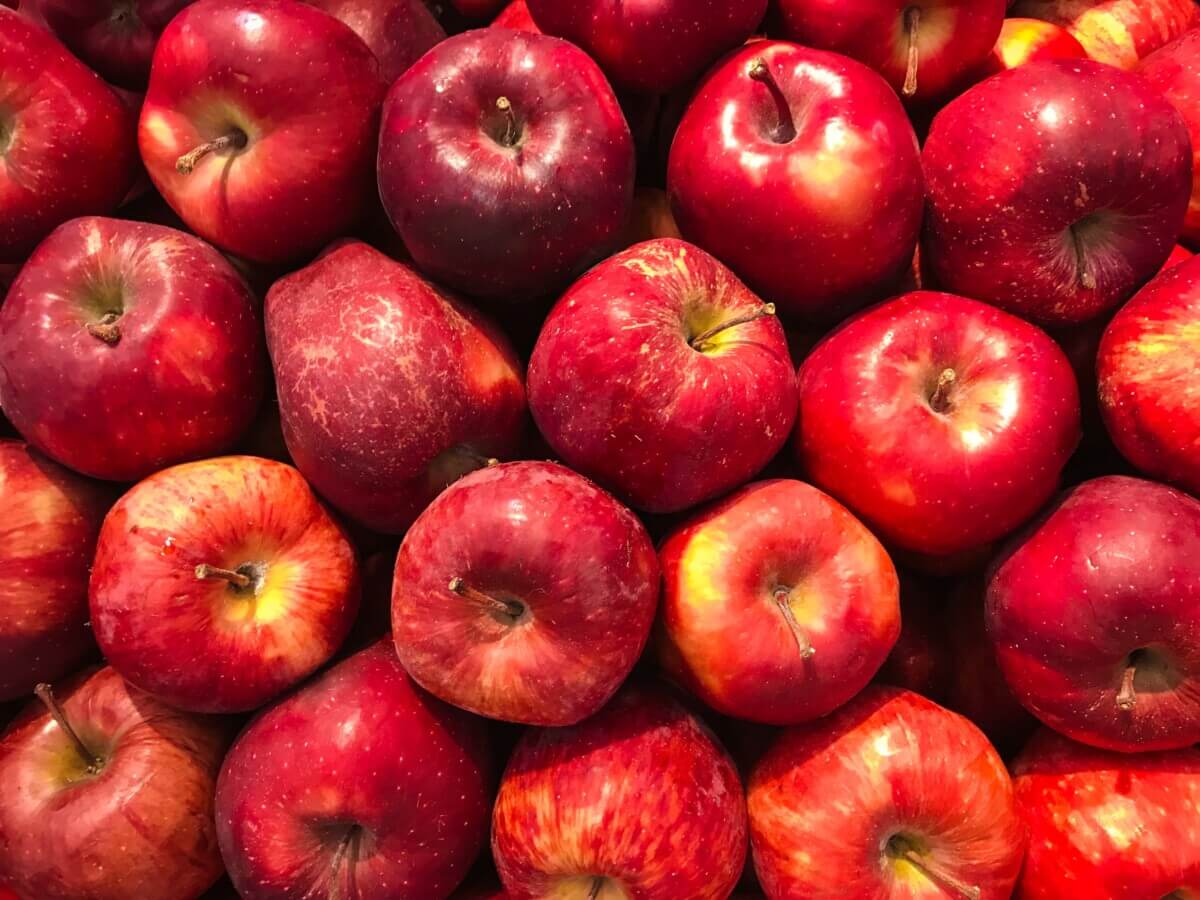
Incorporating more flavonoid-rich foods in your diet can help you age healthily. (Lucigerma/Shutterstock)
In a nutshell
- Eating more flavonoid-rich foods like apples, blueberries, and tea was linked to a lower risk of frailty, physical decline, and poor mental health in older adults.
- Even modest dietary changes, like adding three extra servings of these foods per day, were associated with significant health benefits over time.
- The benefits were especially strong in women, and suggest that diet can influence not just how long we live, but how well we age.
BOSTON — An apple a day actually might help keep the doctor away as you age. A massive new international study spanning over two decades reveals that regularly consuming flavonoid-rich foods like apples, blueberries, and tea could significantly reduce your chances of experiencing the physical and mental decline often associated with aging. What’s on your plate today could determine how well you move, think, and feel tomorrow.
The Power of Flavonoids
The study, published in The American Journal of Clinical Nutrition, reveals that people who regularly consume flavonoid-rich foods—particularly blueberries, apples, and tea—have significantly lower risks of developing the physical and mental health problems that often accompany aging.
The research followed over 86,000 Americans for up to 24 years and found that those who ate the most flavonoid-rich foods were 15% less likely to become frail, 12% less likely to develop physical impairments, and 12% less likely to experience poor mental health compared to those who ate the least.
Increasing consumption by just three servings of flavonoid-rich foods daily was linked to a 6-11% reduction in risk across all three aging outcomes they examined.

Flavonoids are natural compounds found abundantly in plant foods that have powerful anti-inflammatory and antioxidant properties. While previous research has linked them to various health benefits, this study is among the first to examine their impact across multiple dimensions of aging simultaneously.
The researchers followed 62,743 women from the Nurses’ Health Study and 23,687 men from the Health Professionals Follow-up Study, all aged 60 and older. Participants regularly completed detailed food frequency questionnaires along with assessments of their physical and mental health.
To measure flavonoid consumption, the researchers created a “flavodiet score” that tracked intake of foods and beverages high in flavonoids, including tea, red wine, apples, blueberries, oranges, strawberries, and grapefruit. They then analyzed how consumption patterns related to three key markers of unhealthy aging: frailty, impaired physical function, and poor mental health.
Women with the highest flavodiet scores had a 15% lower risk of frailty, a 12% lower risk of physical impairment, and a 12% lower risk of poor mental health compared to those with the lowest scores. While men showed fewer associations overall, those with the highest flavodiet scores still had significantly lower risk of poor mental health.
Among women, habitually high intakes of blueberries were associated with an 11% lower risk of frailty, while apples were linked to a 17% reduction. Red wine showed particularly strong associations, with high intake linked to a 19% lower risk of frailty and a 13% lower risk of physical impairment.
Diet Changes That Made the Biggest Difference
Women who increased their red wine intake showed a 17% lower risk of frailty and an 8% lower risk of physical impairment compared to those whose intake remained stable. Those who decreased their blueberry consumption had a 31% higher risk of developing frailty.
The findings suggest dietary changes can benefit the aging process regardless of when they’re made. Researchers observed advantages not only from consistent high intake over time but also from relatively recent increases in consumption.

The study also examined specific categories of flavonoids, finding that higher intakes of all flavonoid subclasses were associated with lower risks of unhealthy aging outcomes. This suggests that a variety of flavonoid sources in the diet may provide complementary benefits.
But why did women show stronger associations than men? Researchers speculate it might be due to differences in smoking rates, as flavonoids have shown stronger health effects in smokers in previous studies. The female cohort had more current smokers than the male cohort. Another possibility is simply the shorter follow-up period for men (12 years versus 24 for women), which provided less statistical power to detect associations.
A Simple Strategy for Healthier Aging
What we eat significantly influences how we age. While the research doesn’t prove causation, it provides compelling evidence that incorporating more flavonoid-rich foods into our diets could help extend not just our lifespans but our “healthspans”—the period of life spent in good health.
Unlike expensive supplements or complex exercise regimens, adding more apples, berries, and tea to your diet is something most people can easily do. As this research suggests, such simple choices might make the difference between stumbling or striding confidently into your golden years.
Paper Summary
Methodology
The researchers conducted a prospective cohort study following 62,743 women from the Nurses’ Health Study (1990-2014) and 23,687 men from the Health Professionals Follow-up Study (2006-2018), all aged 60 years or older. Participants completed food frequency questionnaires at baseline and every four years thereafter, which were used to calculate both time-updated intakes and changes in consumption of flavonoid-rich foods and beverages. The researchers created a “flavodiet score” by summing the intake of major flavonoid-rich foods (tea, apples, oranges, grapefruit, blueberries, strawberries, and red wine) in servings per day. They also calculated total flavonoid intake and intake of six flavonoid subclasses. The study tracked three health outcomes: frailty (defined using the FRAIL scale), impaired physical function (measured using the Physical Function Score), and poor mental health (assessed using various validated scales). Cox proportional hazards models were used to examine associations between flavonoid intake and these outcomes, with extensive adjustment for potential confounding factors.
Results
In the Nurses’ Health Study (women), participants with the highest flavodiet scores had a 15% lower risk of frailty, 12% lower risk of impaired physical function, and 12% lower risk of poor mental health compared to those with the lowest scores. Higher intakes of tea, red wine, apples, blueberries, and oranges were associated with lower risks of unhealthy aging outcomes. Increases in flavodiet scores and in consumption of specific flavonoid-rich foods were also associated with benefits; for example, increasing red wine intake was linked to 17% lower risk of frailty. All flavonoid subclasses showed protective associations. In the Health Professionals Follow-up Study (men), fewer associations were observed, though men with the highest flavodiet scores had lower risk of poor mental health, and specific foods like tea and blueberries showed protective associations against mental health decline.
Limitations
The study had several limitations. First, outcomes were derived from self-reported questionnaire data, which may result in misclassification. Second, despite extensive adjustment for confounders, residual or unmeasured confounding remains possible. Third, it’s difficult to disentangle whether benefits are due to flavonoids specifically or other constituents in the foods studied. Fourth, the shorter follow-up time for men (12 years versus 24 for women) and different smoking patterns between cohorts may explain sex differences in results. Finally, the study population was predominantly white, middle-aged, and older Americans, limiting generalizability to more diverse populations or those with different dietary patterns.
Funding and Disclosures
The study was supported by grants from the National Institutes of Health and funding from The US Highbush Blueberry Council with oversight from the USDA. Two authors (Cassidy and Rimm) disclosed that they act as advisors to the USHBC grant committee, while all other authors reported no conflicts of interest. The funders had no role in study design, data collection and analysis, interpretation, writing, or publication decisions.
Publication Information
The paper titled “Associations between flavonoid-rich food and flavonoid intakes and incident unhealthy aging outcomes in older United States males and females” was authored by Nicola P. Bondonno, Yan Lydia Liu, Francine Grodstein, Eric B. Rimm, and Aedín Cassidy. It was published in The American Journal of Clinical Nutrition (volume 121, pages 972-985) in February 2025. The study is available online with open access under the CC BY license.







